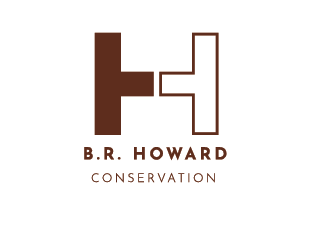What is a condition assessment?
Condition assessments take a good look at your art collection.
Why should an art assessment be completed?
An assessment provides insightful information about the current condition of your piece/collection so you know if there are any crucial issues that need addressed immediately and/or what steps to take to prevent issues.
Who should complete an art assessment?
Typically a conservator completes art assessments, as they have the proper training to see problem areas and recommend treatment. However, in some organizations you'll see people in different roles complete more basic assessments.
How should I prepare for an art assessment?
If you're having an entire collection assessed, before any step can be completed you'll need to compile a list of all the items in your collection. If it is a public art collection, the list should also include the physical location of the piece. (FYI - This list can later be used as the foundation for a public art map!)
Thorough photo documentation is completed during an art condition assessment. This helps with creating a report and for before and after photos from the treatment process.
What is included in an art assessment?
Each piece that is assessed can/will receive its own document within the report. There are a few crucial pieces of information that are included for each piece. They are typically as follows:
Basic overview - The date of assessment, location of object, name of the piece, the artist, and the date it was completed, installed, and/or acquired
Materials - A list of all major materials used for the piece are listed
Dimensions - Conservators will take thorough measurements of the object. Length, width, height, depth, thickness, etc. will be listed
Photos - Photos are always included to give the assessment visual reference and allows the conservator to accurately document any issues that may be occurring. Ideally, photos will be taken from all directions/sides as well as detail shots.
Description - The conservator will write a few sentences or a few paragraphs describing the object. This is a factual account without any opinion included. Details like color, shape, size, location, direction, etc will be described.
Overall/General Condition Rating - A rating system is usually developed for this section using terms like "excellent", "good", "fair", and "poor". A key will be added to the beginning of the report that explains what each section means. For example, "Good" may mean that the piece is stable, no major cracks/breaks/etc, but it has a small amount of paint flaking or a small cosmetic issue.
Condition - This section explains the General Condition Rating by going into further detail regarding any issues that may be occurring. This may include mention of breaks, tears, scratches, deterioration, mold, corrosion, flaking paint, chipped areas, missing pieces, rotting wood, and/or other damages or areas of concern.
Treatment Priority - A rating system is usually developed for this section. It could be numerical like high priority items are "1", next highest are "2", etc. or it may use terms like "high", "medium", and "low". These tiers are sometimes associated with recommended dates for treatment. For example, high priority items should be completed in the first quarter, while low priority items could wait until the third quarter. The goal of the Treatment Priority line item is to give the organization an idea of which items are crucial to receive treatment first.
Treatment Recommendations - This section is where the conservator will use their experience and conservation knowledge to determine what the best steps would be to treat the object. This could be a special cleaning, a new coating, fills and repairs, replace parts, reproduce parts, repaint, remove paint, and/or many others. Some treatment recommendations may be optional or the conservator may give different options altogether for how to address certain issues. The conservator may also include information about what steps can be taken to prevent issues from occurring in the future. All treatment recommendations should be in compliance with AIC standards.
What can be assessed?
Condition assessments can be completed on nearly any kind of art, artifact, or cultural heritage piece. Our team has even assessed anything from full museum collections to architectural elements.
How will I receive the assessment?
All of this information will be compiled into a report for the client. The report as a whole may include additional information about maintenance, general observations, costs, explanations of rating systems, company information, timelines, and more.
The structure or template used to do an assessment can also vary from piece to piece. There would be different potential issues with a textile piece than with a bronze sculpture. A conservator could use a specific form for assessing a sculpture and a different form to assess the condition of a historic dress to make sure they had the appropriate information for the client.
What should you do after an art assessment is finished?
A thorough art assessment gives you the information you need to make some important decisions about the future of your art or collection. You may need to have a meeting with your organization board, financial advisers, advocacy group, staff, or other invested parties to decide your next steps. You may be able to work with the conservator to create or modify a schedule for treatment, for example complete all treatment for bronze sculptures at the beginning of the year and complete all murals in the fall. In either case, you are now fully equipped to know what condition your pieces are in and if there is any immediate action that needs taken. An assessment is just the beginning of your conservation journey.
Next steps: Once you get your collection looking great, you might be interested to learn about routine art maintenance or creating a volunteer art maintenance program.
Now that you're here
B.R. Howard is a leader in conservation treatment, maintenance, and assessment. We have extensive experience with sculptures, military artifacts, art collections, and historic vehicles. We'd be happy to be involved with your next conservation project. Contact us to get started.




